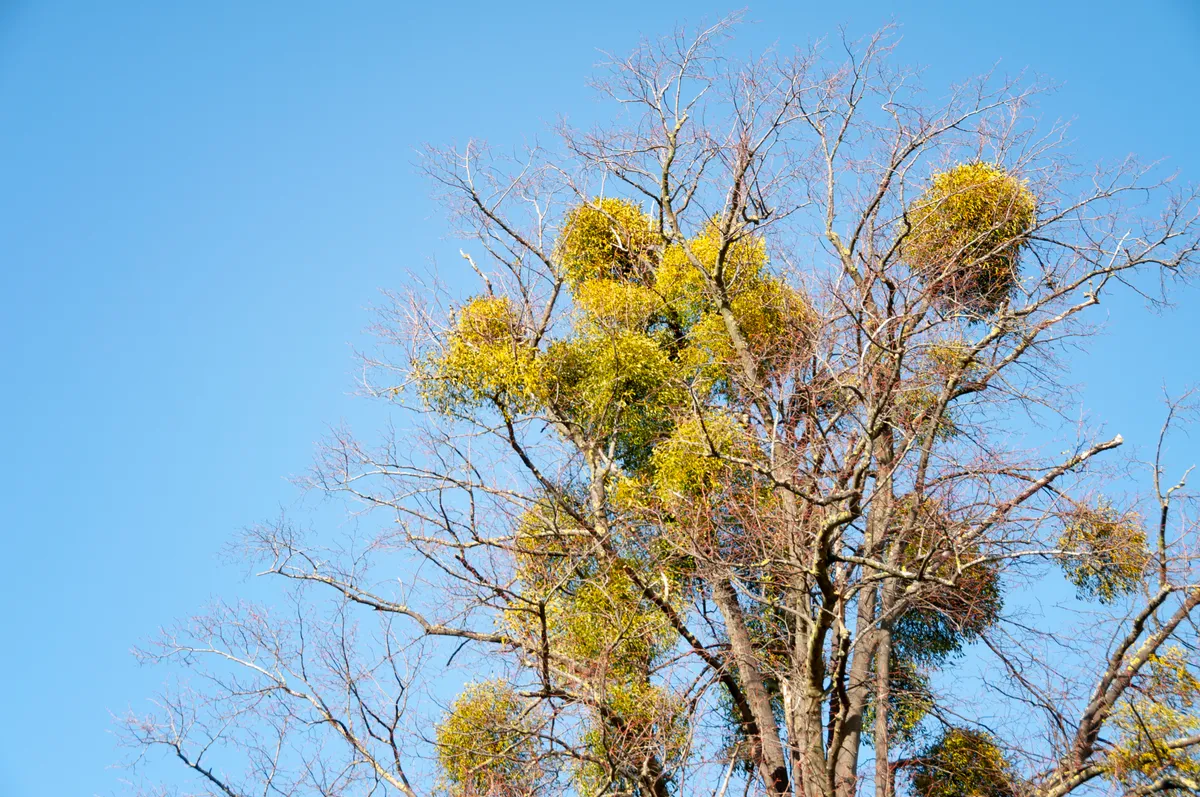Often associated with Christmas, Mistletoe is a common name for many plants in the order Santalales. There is one native species in the UK Viscum albums, which is often best spotted during winter when many other plants have lost their leaves.
Although mistletoe is found across the UK, the majority of the country's population is found in the southwest Midlands. Climate change and birds such as blackcaps and mistle thrushes may help this Christmas icon spread across the UK.
Blackcaps adore mistletoe berries, and those that visit the UK for the winter from Germany and Austria devour the autumn-ripening fruit. After eating the flesh, they wipe off the sticky seeds on the branches of trees, sowing the seeds of future harvests.
Information on mistletoe surveys can be found at surveys.mistletoe.org.uk, although records can also be submitted to general wildlife recording schemes.
Where does mistletoe grow?
Mistletoe is a hemi (partial) parasite which attaches to a tree via suckers roots and absorbs some water and nutrients from its host plant. However, it also produces some of its own food via photosynthesis in its green leaves.
It can be found on a variety of host plants including apple, lime, poplar, sycamore, ash and hawthorn. However it is rarely found on oak.

Does mistletoe harm the host tree its living on?
As the mistletoe is taking nutrients away from the tree, it will reduce the development of the branches on which it grows.
If there are a lot of mistletoe plants on a relatively small tree, the tree may be affected: increasing the risk of wind-blow and water stress, and reducing the fruit crop. If this is the case, the mistletoe can be managed so that both plants are kept healthy.
What are the male and females parts on mistletoe?
Unlike many plants which are both male and female, mistletoe is in a group of plants that are dioecious. This means that plants are either male or female. It is the female plants that have the white berries.

What are the traditions and lore surrounding mistletoe?
Fans of Norse legend will be interested to hear that mistletoe has a strong association with the trickster god Loki. Baldur, one of the Norse gods and the son of Frigg and Odin, was slain by Loki with a weapon made of mistletoe. Frigg had made everything on earth taken an oath never to harm Baldur, who had been haunted by dreams of his own death. Realising that had been left out mistletoe, the trickster god Loki created a weapon from the plant and killed Baldur (although he actually tricked Baldur's blind brother, Hour, to do the killing). Baldur's death was the first in a chain of events which lead to Ragnarök.
In the Middle Ages, it was believed that mistletoe have a variety of magical properties such as stopping the trances of epileptics and keeping witches at bay or warding off evil.
It was believed by the Victorians that the seeds of the mistletoe would only germinate is they passed through a mistle thrush. Although not true, research has shown that when seeds do pass through a bird's guts, they will germinate faster.
A sprig of mistletoe is traditionally hung above the door and a berry removed with each kiss.
Due to mistletoe's association with paganism, the plant is sometimes banned from Christmas decorations.
Mistletoe is celebrated with the Mistletoe Festival in Tenbury Wells - the 'Capital of English Mistletoe', and by National Mistletoe Day (usually the first Saturday in December).
Which animals are found on mistletoe?
There are a number of insects which are only found on mistletoe, including mistletoe marble moth (Celypha woodiana) and a bug (Anthocoris visci).
Is mistletoe poisonous?
Mistletoe is not highly poisonous but is toxic to humans if ingested, and while it is very unlikely to cause death, it will cause drowsiness, vomiting, blurred vision and occasionally seizures, so don't eat it. It's also best avoided by household pets, according to the Kennel Club, as while it won't kill them it can cause symptoms such as gastrointestinal upset and drooling.
Mistletoe branch close up. © Studio Doros/Getty
